Strong and shallow M6.3 earthquake hits the Gulf of California
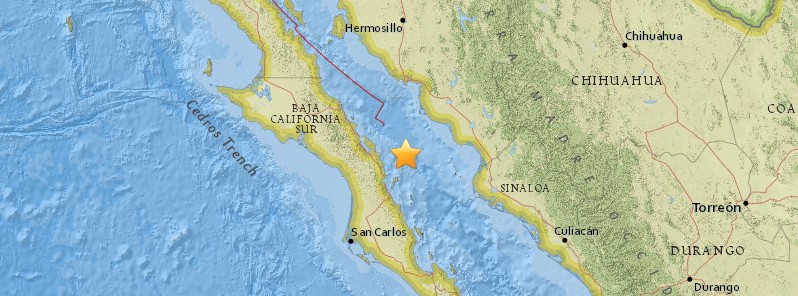
A strong and shallow earthquake registered by the USGS as M6.3 hit the Gulf of California at 16:18 UTC (08:18 PST) on January 19, 2018. The agency is reporting a depth of 10 km (6.2 miles). EMSC is reporting M6.2 at a depth of 30 km (18.6 miles). Tsunami is not expected.
The epicenter was located 69.4 km (43.1 miles) NE of Loreto (population 11 227) and 127.8 km (79.4 miles) WSW of Villa Juares (population 14 680), Mexico.
There are about 17 000 people living within 100 km (62 miles).
Based on earthquake information and historic tsunami records, this earthquake is not expected to generate a tsunami, NTWC said.
Some 1 413 000 people are estimated to have felt light shaking and 6 350 000 weak.
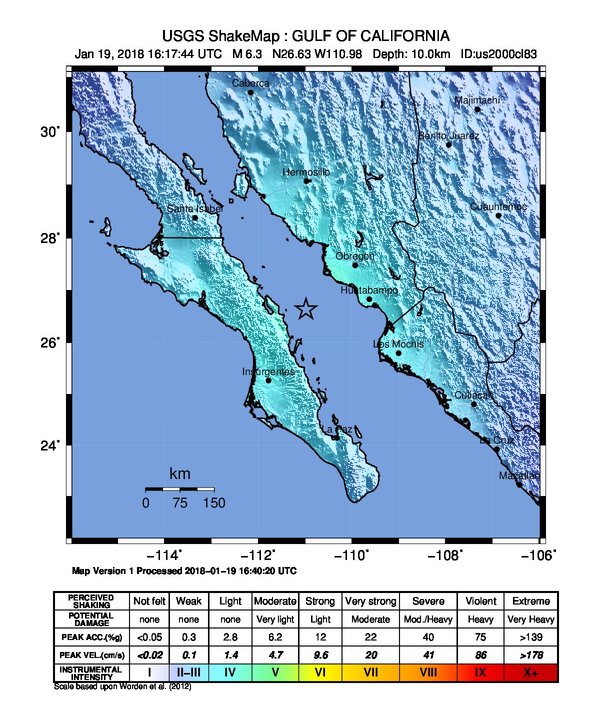 The USGS issued a green alert for shaking-related fatalities and economic losses. There is a low likelihood of casualties and damage.
The USGS issued a green alert for shaking-related fatalities and economic losses. There is a low likelihood of casualties and damage.
Overall, the population in this region resides in structures that are a mix of vulnerable and earthquake resistant construction. The predominant vulnerable building types are mud wall and adobe block with concrete bond beam construction.
Estimated population exposure to earthquake shaking
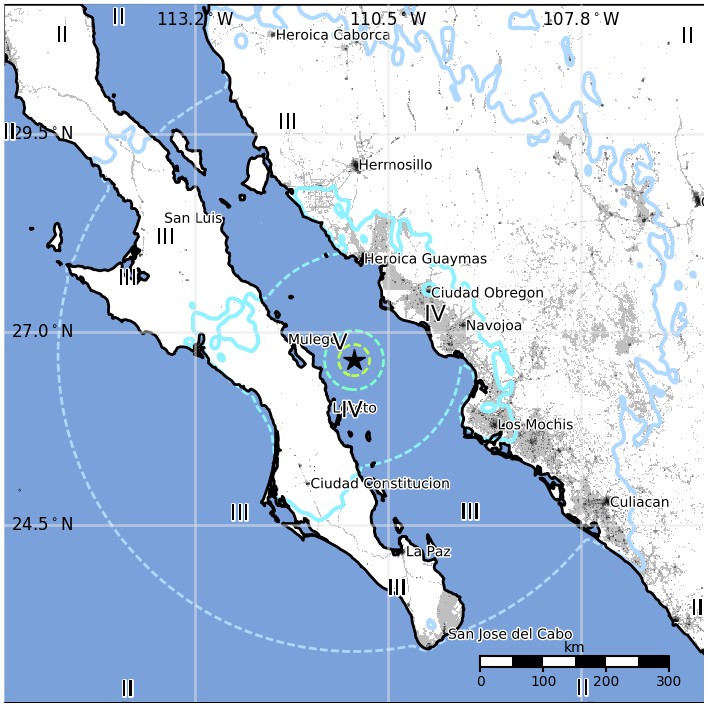
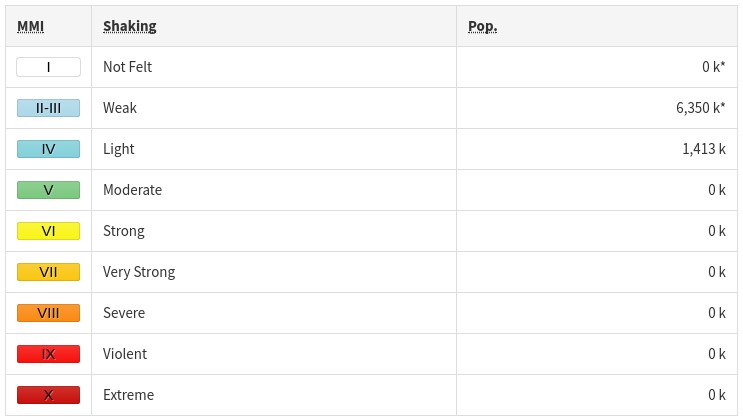
Selected cities exposed
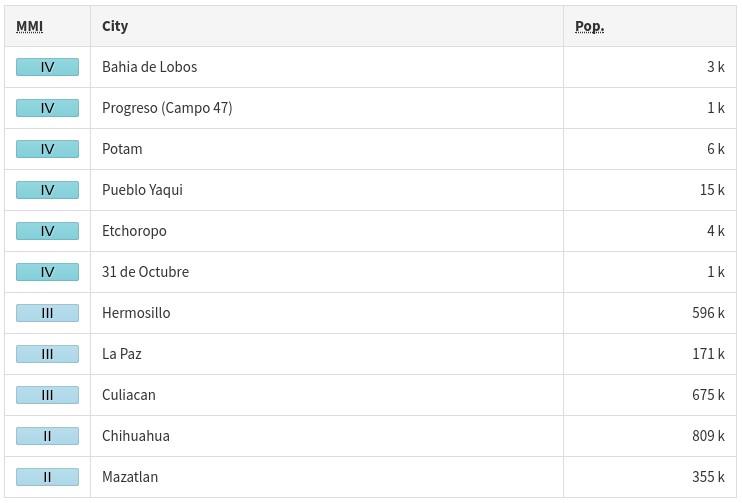
Regional seismicity
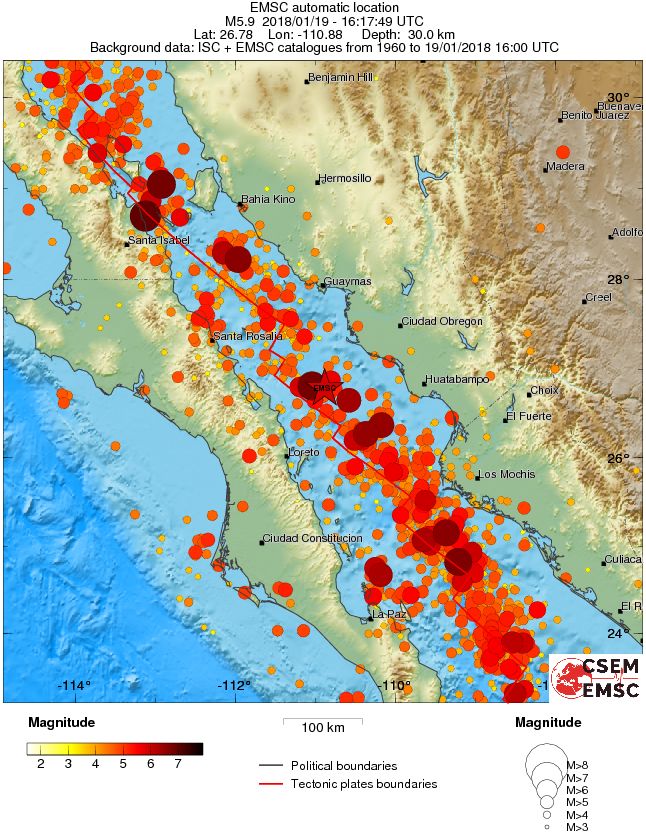
Seismotectonics of Mexico
Located atop three of the large tectonic plates, Mexico is one of the world's most seismically active regions. The relative motion of these crustal plates causes frequent earthquakes and occasional volcanic eruptions. Most of the Mexican landmass is on the westward moving North American plate. The Pacific Ocean floor south of Mexico is being carried northeastward by the underlying Cocos plate. Because oceanic crust is relatively dense, when the Pacific Ocean floor encounters the lighter continental crust of the Mexican landmass, the ocean floor is subducted beneath the North American plate creating the deep Middle American trench along Mexico's southern coast. Also as a result of this convergence, the westward moving Mexico landmass is slowed and crumpled creating the mountain ranges of southern Mexico and earthquakes near Mexico's southern coast. As the oceanic crust is pulled downward, it melts; the molten material is then forced upward through weaknesses in the overlying continental crust. This process has created a region of volcanoes across south-central Mexico known as the Cordillera Neovolcánica.
The area west of the Gulf of California, including Mexico's Baja California Peninsula, is moving northwestward with the Pacific plate at about 50 mm per year. Here, the Pacific and North American plates grind past each other creating strike-slip faulting, the southern extension of California's San Andreas fault. In the past, this relative plate motion pulled Baja California away from the coast forming the Gulf of California and is the cause of earthquakes in the Gulf of California region today.
Mexico has a long history of destructive earthquakes and volcanic eruptions. In September 1985, a magnitude 8.0 earthquake killed more than 9,500 people in Mexico City. In southern Mexico, Volcán de Colima and El Chichón erupted in 2005 and 1982, respectively. Paricutín volcano, west of Mexico City, began venting smoke in a cornfield in 1943; a decade later this new volcano had grown to a height of 424 meters. Popocatépetl and Ixtaccíhuatl volcanos ("smoking mountain" and "white lady", respectively), southeast of Mexico City, occasionally vent gas that can be clearly seen from the City, a reminder that volcanic activity is ongoing. In 1994 and 2000 Popocatépetl renewed its activity forcing the evacuation of nearby towns, causing seismologists and government officials to be concerned about the effect a large-scale eruption might have on the heavily populated region. Popocatépetl volcano last erupted in 2010. (USGS)
Featured image: USGS

Is 50mm the same as 50 miles?
50 millimeters (1.96 inches)